Restoring Handplanes: Sharpening and Setup
Rollie Johnson shows his simple but effective method for sharpening a bench plane and then dials it in to get perfect shavings.
Start your 14-day FREE trial to watch this video
Plus, access more than 500 video workshop episodes when you become a member
Rejuvenating an old Stanley Bailey plane is a great way to get started handplaning without breaking a slim woodworking budget. Tearing down a plane to its bare chassis and building it back to blueprint specs not only creates a great performing plane, but also gives you an insight into how these wonderful bench mates work. Rollie Johnson has rebuilt dozens of Bailey planes and given more than 100 seminars on the subject. In this video workshop he demonstrates his step-by-step approach to turning a clunker into a classic.
In this episode Rollie shows you his simple but effective method for sharpening a bench plane and then dials it in to get perfect shavings.
Videos in the Series
-
Restoring Vintage Handplanes with Rollie Johnson: IntroductionJanuary 27, 2021
-
Restoring Handplanes: All About Stanley PlanesJanuary 27, 2021
-
Restoring Handplanes: The Parts of a Bench PlaneFebruary 3, 2021
-
Restoring Handplanes: Cleaning and RepairingFebruary 10, 2021
-
Restoring Handplanes: Tuning up PartsFebruary 17, 2021
-
Restoring Handplanes: Sharpening and SetupFebruary 25, 2021
-
Restoring Handplanes: Block PlaneMarch 3, 2021
-
Tuning and Using the Stanley 82 ScraperMarch 10, 2021


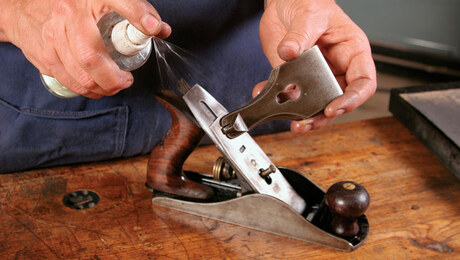
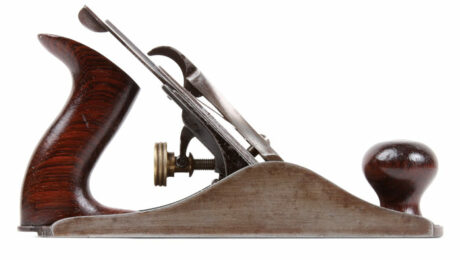
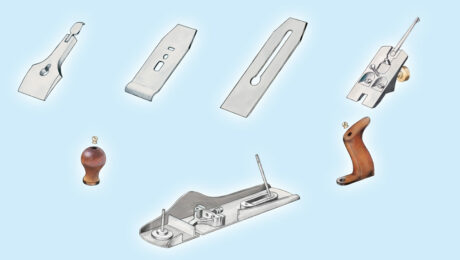
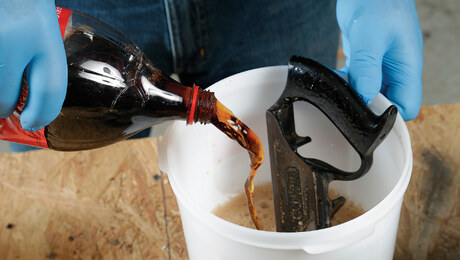
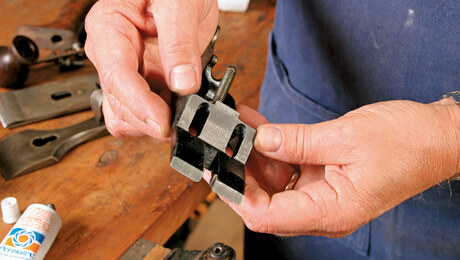
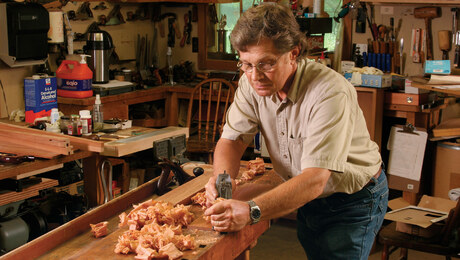
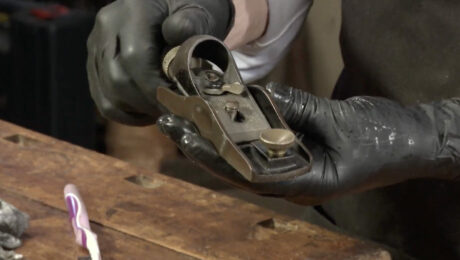
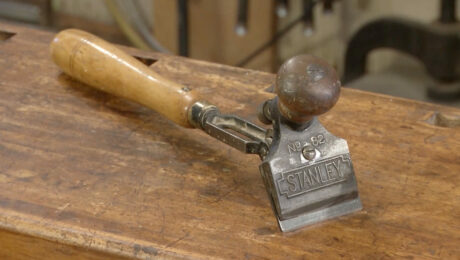






Comments
Dr. Johnson, great tip on keeping the downward pressure the depth adjuster wheel to remove the back lash. Ep5
Alone, worth the price of admission.
Great series!
Very nice coverage of planing. Rollie doesn't mention cambering the blade. I read where this is necessary--as how an edge can dig in and mess up what you have accomplished. So, this kind of intimidates me. What are the thoughts about cambering....is it necessary, how to avoid problems if you don't do it, how to camber, etc? Please.
Also, why do you not use a "back bevel" (created using the "ruler trick"), and also a secondary bevel after creating the 25 degree primary bevel?? Do you not think they are necessary?
Great series Roland! I've had a Bailey No. 7, Type 9 and a Bailey No. 4 Type 16, for over 25 years now, sitting in my cabinet collecting rust. Your series inspired me to finally get these planes refurbished and tuned up for use again. Excellent instructions, I've got them all back together, following everything you said, and I'm ready to start using them again. Thanks for your inspirational teaching!!! John Photos from before/ and midway through restoring (on no. 4)
Thank You for this concise series. Being fairly new to wood working, 4 or 5 yrs. I have used modern power equipment. But, I have my Grandfather's Bedrock, and a couple other nice Stanley's which I can now restore, and then sharpen and adjust properly. Which I apparently did not know how to do. Thanks again.
For many years now I've wondered about sharpening angle of a bevel down bench plane. I personally can't tell a lick of difference in performance between 25, 30 or even 35 degrees bevel - except for edge retention. Again for a bevel down plane, the blade approaches the wood at the frog angle (usually 45 degrees) with the bevel simply providing clearance. I might be missing something, so if the angle does matter, I'd really like to know why
Episode 5, 12:38. Plane therapy when you're having a bad day. Cheaper than psychotherapy. Buy another plane with the money you save.
I learned a lot. I love old planes, this was worth my subscription.
Log in or become a member to post a comment.
Sign up Log in